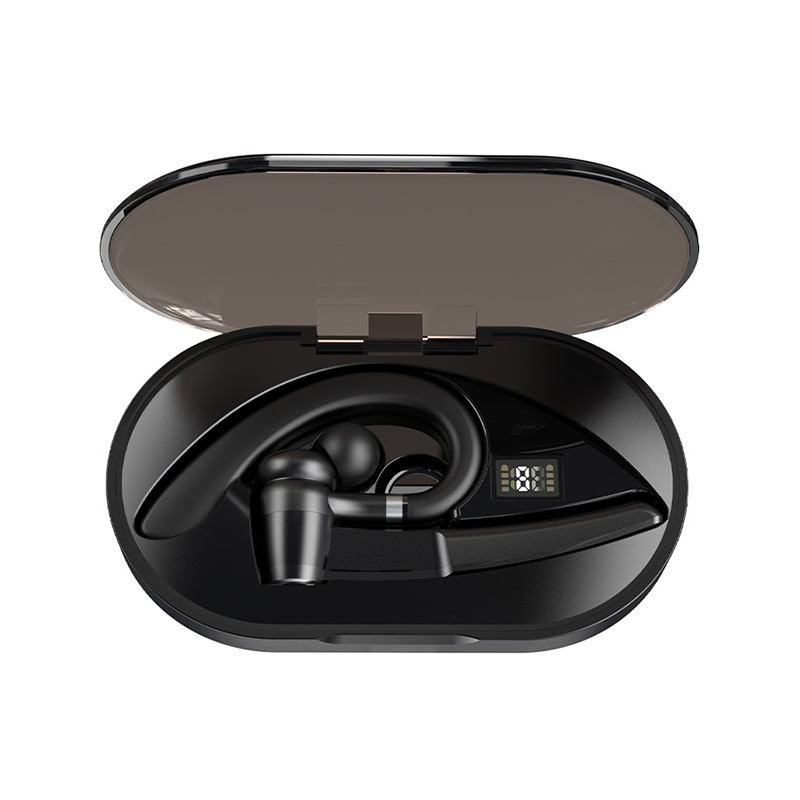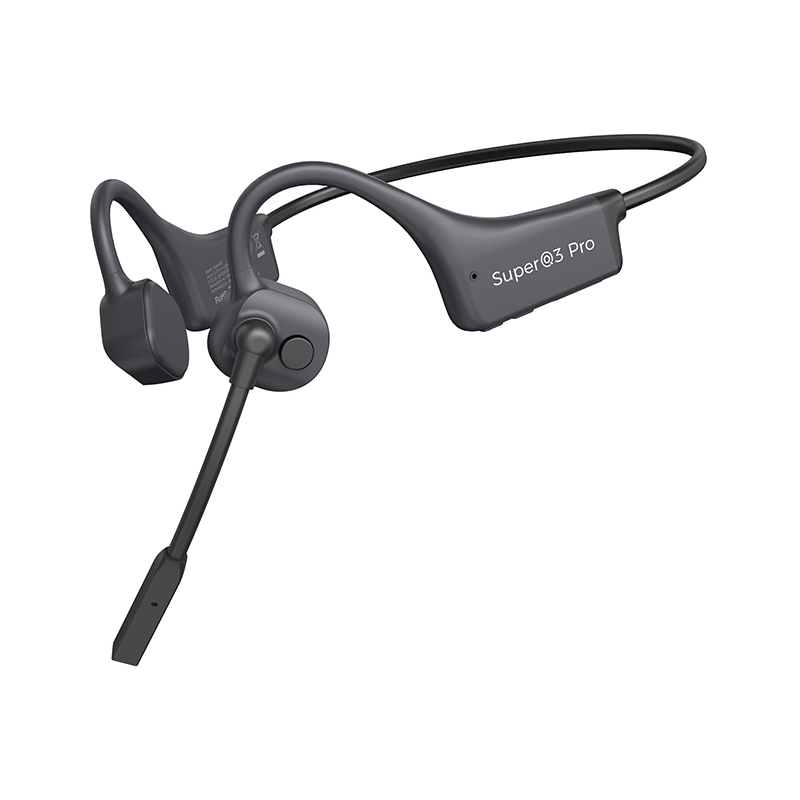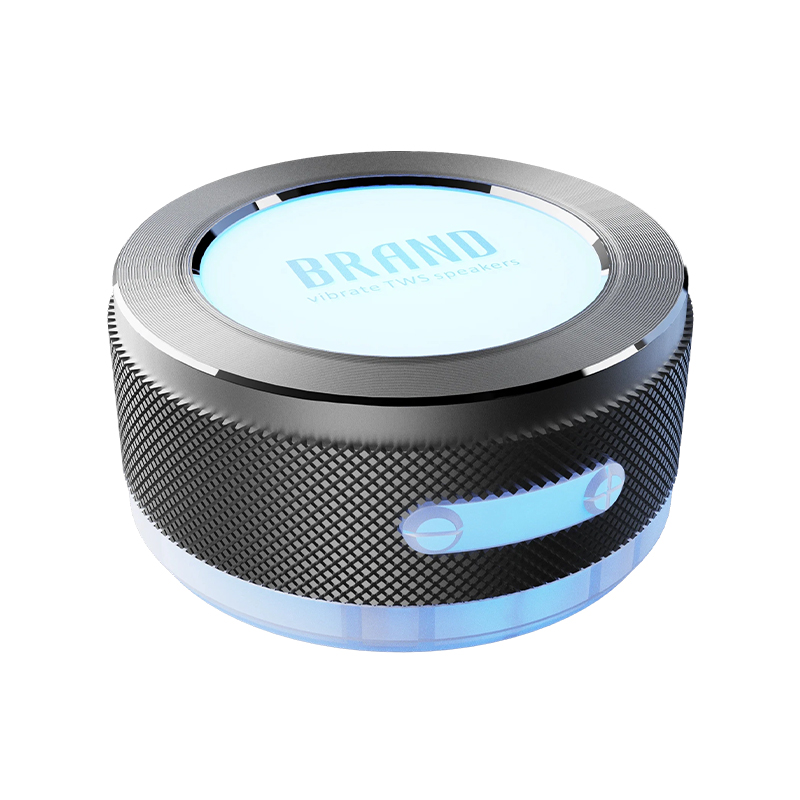Since a bone conduction Bluetooth headset doesn't need to be inserted into the ear, how can we reduce bacterial growth in the ear canal and improve wearing hygiene?
Release Time : 2025-09-10
The bone conduction Bluetooth headset's in-ear design eliminates the core cause of bacterial growth in the ear canal: the closed, humid environment. In-ear headphones penetrate deeply into the ear canal, blocking airflow. This prevents sweat and sebum from evaporating, gradually accumulating and creating a warm, humid microenvironment that fosters the growth of bacteria (such as Staphylococcus and Streptococcus). The bone conduction Bluetooth headset, on the other hand, conforms to the outer ear contour or temporal bone, avoiding penetration. This maintains natural ventilation, allowing sweat and sebum to evaporate, preventing the growth of a humid environment, and effectively eliminating the spatial structure that fosters bacterial growth.
The antimicrobial design of the contact material is a key factor in the improved wearer hygiene of the bone conduction Bluetooth headset. Because these earphones are in constant contact with the skin (especially in sweat-prone areas like the outer ear and cheeks), the materials used in these contact areas require special antimicrobial treatments. For example, medical-grade silicone or antimicrobial ABS plastics with inherent antimicrobial properties may be used, or the materials may be sprayed with nano-silver antimicrobial coatings or zinc oxide antimicrobial films. These antimicrobial materials can reduce bacterial attachment and growth on contact surfaces by disrupting bacterial cell membranes and inhibiting protein synthesis. Even small amounts of sweat or sebum on the earphone surface can reduce bacterial growth, preventing the contact area from becoming a vector for bacterial transmission.
The non-sealed fit further reduces the likelihood of bacterial accumulation around the ear canal. Bone conduction Bluetooth headsets typically adhere to the skin with light pressure, rather than a closed fit. A tiny gap between the contact surface and the skin allows for gentle airflow, accelerating sweat evaporation and reducing surface temperature buildup. Excessive heat can promote bacterial metabolism, while ventilation and heat dissipation maintain a normal skin temperature in the contact area, indirectly inhibiting bacterial activity. This non-sealed fit also reduces friction and pressure on the skin's stratum corneum, preventing damage to the skin barrier due to prolonged compression and lowering the risk of bacteria invading through damaged skin.
The improved cleaning convenience makes it easier for users to maintain headset hygiene, thereby reducing bacterial residue. Bone conduction Bluetooth headsets lack the complex structure of in-ear earbuds (such as earbud sleeves and sound guide holes, which can easily harbor dirt and debris). Their skin-contacting surfaces are mostly smooth or simply curved, eliminating numerous dead corners. Daily cleaning requires only a gentle wipe of the contact surface with a clean, damp cloth or alcohol pad. There's no need to remove small components (such as in-ear earbud sleeves) or deeply clean the narrow sound guide holes. This more thoroughly removes residual sweat, sebum, and dust, reducing bacterial harbours and preventing recurring bacterial growth caused by incomplete cleaning.
Protecting the balance of bacterial flora in the ear canal is another hidden hygienic advantage of the non-in-ear design. The human ear canal houses a healthy bacterial ecosystem, which interacts to maintain a balanced microbiome and protect against the invasion of harmful bacteria. Long-term use of in-ear headphones not only disrupts the ear canal's ventilation but can also introduce bacteria into the ear canal. Physical friction can alter the bacterial structure within the ear canal, leading to imbalances and potentially causing ear canal inflammation (such as otitis externa). Bone conduction Bluetooth headsets, on the other hand, do not contact the ear canal interior, thus preventing disruption to the natural bacterial ecosystem. This maintains the natural balance and reduces the potential for harmful bacteria to overgrow.
The hydrophobic, sweat-resistant design, designed for sweating, further enhances hygienic protection. Given that users often wear bone conduction Bluetooth headsets during exercise, these headsets often feature a hydrophobic coating on their contact surfaces to prevent sweat from lingering. The salt and oil in sweat are important nutrients for bacteria, and the hydrophobic design allows sweat to quickly slide off the contact surface or evaporate through gaps, minimizing the potential for nutrient retention. Furthermore, the internal circuitry of some earphones is waterproof. Even if a small amount of water accidentally comes into contact with them during cleaning, it won't cause moisture or mold to form on the internal components, preventing bacteria from growing inside the earphones and spreading through the air to the ear canal.
This improved long-term wearing comfort indirectly reduces hygiene risks caused by discomfort. In-ear earphones can cause ear pain and itching by blocking the ear canal, leading users to frequently adjust the earphones with their hands, transferring bacteria carried by their hands to the earphones and the ear canal area. Bone conduction Bluetooth headsets, however, are not in-ear headphones and therefore do not cause pressure on the ear canal, resulting in greater comfort. This significantly reduces the frequency of adjustment required, minimizing the chance of hand bacteria coming into contact with the earphones and ear skin. Furthermore, a comfortable wearing experience encourages users to maintain regular cleaning habits, avoiding neglecting hygiene due to cleaning difficulties or discomfort, thus creating a virtuous cycle of hygiene.







